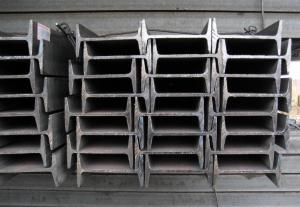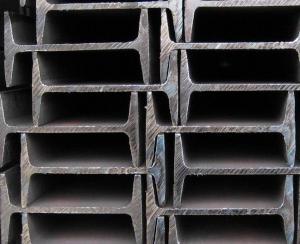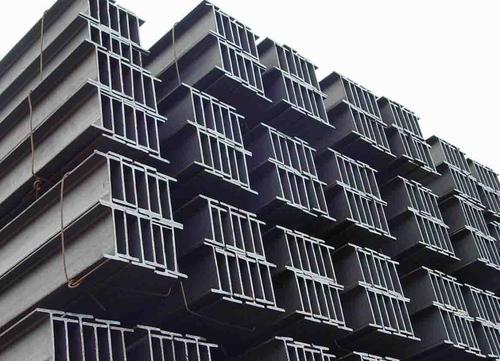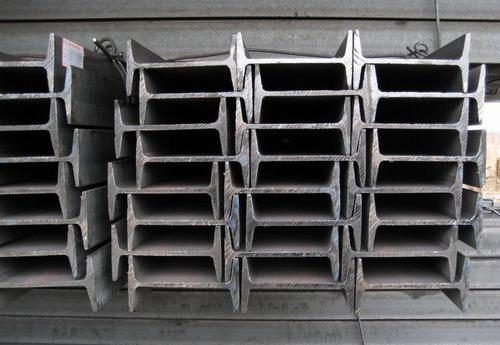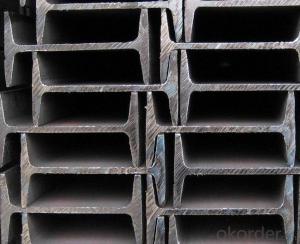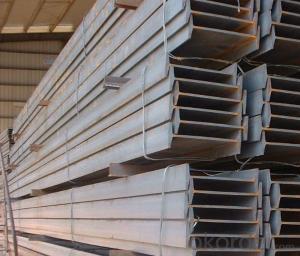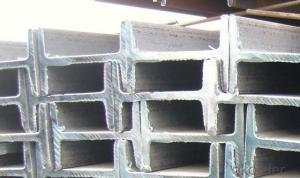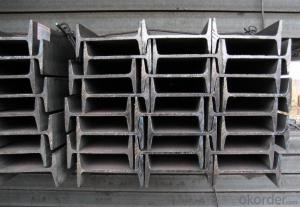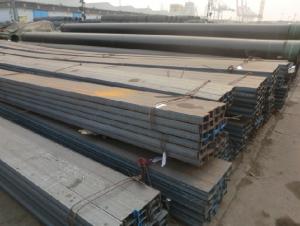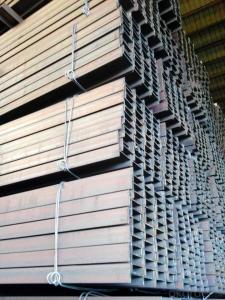IPE/IPEAA Beam in Material Grade GB-Q235
- Loading Port:
- Tianjin
- Payment Terms:
- TT OR LC
- Min Order Qty:
- 25 m.t.
- Supply Capability:
- 10000 m.t./month
OKorder Service Pledge
OKorder Financial Service
You Might Also Like
Product Description:
OKorder is offering high quality Hot Rolled Steel I-Beams at great prices with worldwide shipping. Our supplier is a world-class manufacturer of steel, with our products utilized the world over. OKorder annually supplies products to European, North American and Asian markets. We provide quotations within 24 hours of receiving an inquiry and guarantee competitive prices.
Product Applications:
1. Supporting members, most commonly in the house raising industry to strengthen timber bears under houses. Transmission line towers, etc
2. Prefabricated structure
3. Medium scale bridges
4. It is widely used in various building structures and engineering structures such as roof beams, bridges, transmission towers, hoisting machinery and transport machinery, ships, industrial furnaces, reaction tower, container frame and warehouse etc.
Product Advantages:
OKorder's Steel I-Beams are durable, strong, and resist corrosion.
Main Product Features:
· Premium quality
· Prompt delivery & seaworthy packing (30 days after receiving deposit)
· Corrosion resistance
· Can be recycled and reused
· Mill test certification
· Professional Service
· Competitive pricing
Product Specifications:
1. Invoicing on theoretical weight or actual weight as customer request
2. Standard: EN10025, GB Standard, ASTM
3. Grade: Q235B, Q345B, SS400, ASTM A36, S235JR, S275JR
4. Length: 5.8M, 6M, 9M, 12M as following table
5. Sizes: 80mm-270mm
Dimensions(mm) | |||||
h | b | s | t | Mass Kg/m | |
IPE80 | 80 | 46 | 3.80 | 5.20 | 6.00 |
IPE100 | 100 | 55 | 4.10 | 5.70 | 8.10 |
IPE120 | 120 | 64 | 4.80 | 6.30 | 10.40 |
IPE140 | 140 | 73 | 4.70 | 6.90 | 12.90 |
IPE160 | 160 | 82 | 5.00 | 7.40 | 15.80 |
IPE180 | 180 | 91 | 5.30 | 8.00 | 18.80 |
IPE200 | 200 | 100 | 5.60 | 8.50 | 22.40 |
IPE220 | 220 | 110 | 5.90 | 9.20 | 26.20 |
IPE240 | 240 | 120 | 6.20 | 9.80 | 30.70 |
IPE270 | 270 | 135 | 6.60 | 10.20 | 36.10 |
FAQ:
Q1: Why buy Materials & Equipment from OKorder.com?
A1: All products offered byOKorder.com are carefully selected from China's most reliable manufacturing enterprises. Through its ISO certifications, OKorder.com adheres to the highest standards and a commitment to supply chain safety and customer satisfaction.
Q2: How do we guarantee the quality of our products?
A2: We have established an advanced quality management system which conducts strict quality tests at every step, from raw materials to the final product. At the same time, we provide extensive follow-up service assurances as required.
Q3: How soon can we receive the product after purchase?
A3: Within three days of placing an order, we will begin production. The specific shipping date is dependent upon international and government factors, but is typically 7 to 10 workdays.
Images:
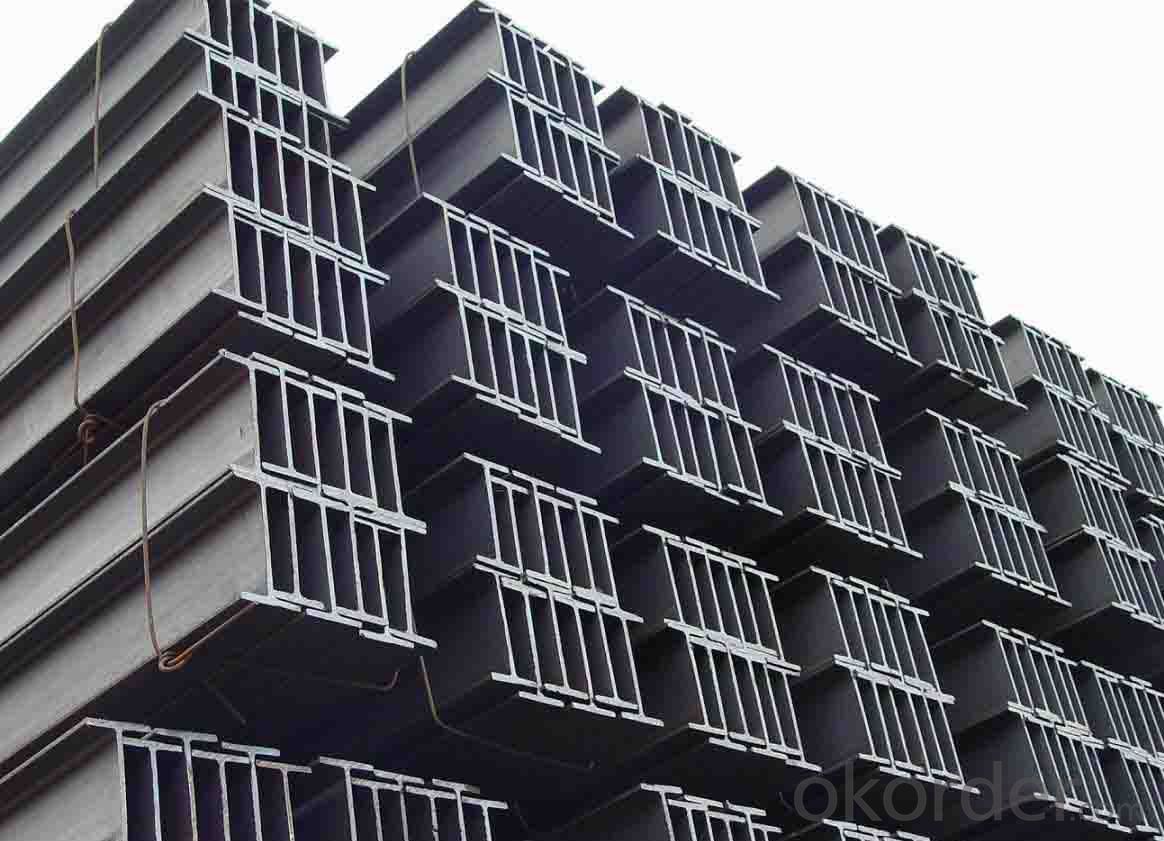
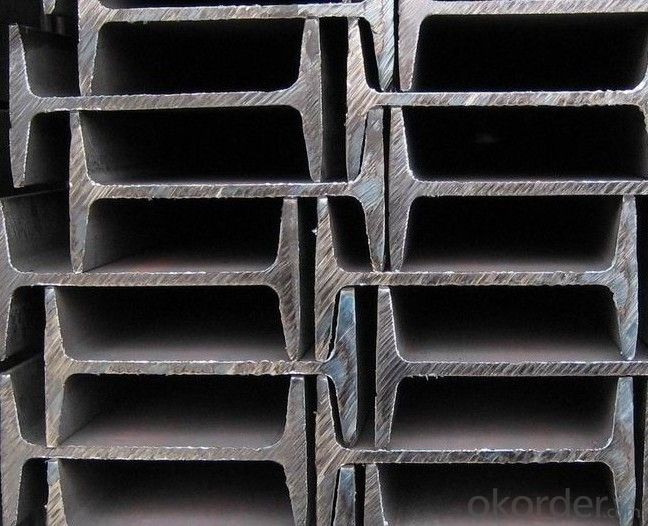
- Q: What does the model of I-beam mean?
- The main specifications of the available contour I-beam section size (mm) expressed in high waist leg width (H) * (b) * (d) mm thick waist numbers, such as I160 x 88 x 6, namely said waist height 160mm, waist leg width 88mm, thickness 6mm the specifications are available. Steel I-beam type (number), showing the type of waist high number of centimeters, such as waist high 160mm I-beam model I 16#. the same as high waist I-beam, there are several different leg width and waist thick, need to add code in the right type (also known as a or B or C connector) to make a difference, such as 32a#, 32b#, 32c# and so on.
- Q: Can Steel I-Beams be used for rooftop gardens?
- Yes, Steel I-Beams can be used for rooftop gardens. They provide structural support and can be used to create raised beds or support structures for plants, ensuring the weight of the garden is properly distributed.
- Q: How are steel I-beams protected against vandalism?
- Steel I-beams are commonly protected against vandalism through several methods. One commonly used method is the application of anti-graffiti coatings, which make it easier to remove any unwanted graffiti or paint. Additionally, security measures such as surveillance cameras, motion sensors, or fencing can be installed to deter vandals and catch them in the act. In some cases, steel I-beams can also be treated with corrosion-resistant coatings to prevent damage caused by vandalism attempts.
- Q: Can steel I-beams be customized or fabricated to meet specific project requirements?
- Yes, steel I-beams can be customized and fabricated to meet specific project requirements. This flexibility in design and manufacturing allows for the adaptation of steel I-beams to suit various structural needs, such as specific load-bearing capacities, dimensions, and architectural specifications.
- Q: Are steel I-beams suitable for seismic zones?
- Yes, steel I-beams are generally considered suitable for seismic zones. Steel is a strong and ductile material, which means it has the ability to bend without breaking. This makes it an ideal choice for withstanding seismic forces and vibrations. I-beams are a popular choice for seismic design because of their structural efficiency and ability to resist lateral loads. The shape of the I-beam provides it with a high moment of inertia, allowing it to distribute seismic forces over a larger area and minimize damage. Additionally, the inherent flexibility of steel allows it to absorb and dissipate seismic energy, reducing the impact on the overall structure. Moreover, steel I-beams can be designed to meet the specific requirements of seismic zones. Design codes and standards, such as the International Building Code (IBC), provide guidelines for the structural design of buildings in seismic zones. These codes outline the minimum requirements for the design and construction of steel structures to ensure their safety and performance during earthquakes. However, it is important to note that the suitability of steel I-beams in seismic zones also depends on other factors such as the design of connections, foundation design, and the overall structural system. Proper engineering analysis and design considerations are necessary to ensure the performance and safety of steel I-beams in seismic zones.
- Q: Can steel I-beams be used in water or wastewater treatment plant renovation projects?
- Steel I-beams are a suitable option for water or wastewater treatment plant renovation projects. Their strength, durability, and versatility make them commonly used in construction projects. In the case of water or wastewater treatment plant renovations, where there is a need for heavy loads and high structural requirements, steel I-beams are an ideal choice. They can be utilized for various purposes, including supporting large tanks, bridges, walkways, and platforms. Moreover, steel I-beams exhibit excellent resistance to corrosion, which is crucial in water or wastewater treatment plants where exposure to corrosive elements is common. Overall, steel I-beams provide a reliable and cost-effective solution for water or wastewater treatment plant renovation projects.
- Q: How do steel I-beams contribute to the overall energy efficiency of a structure?
- Steel I-beams contribute to the overall energy efficiency of a structure by providing a strong and durable framework that allows for the use of energy-saving materials and techniques. The high strength-to-weight ratio of steel I-beams enables the construction of lighter structures, reducing the amount of energy required for transportation and installation. Additionally, steel I-beams have excellent thermal conductivity, allowing for efficient heating and cooling distribution throughout the building. Their durability and resistance to corrosion also ensure a longer lifespan, minimizing the need for repairs and replacements, which further enhances the energy efficiency of the structure.
- Q: How do you reinforce a steel I-beam?
- One way to reinforce a steel I-beam is by adding steel plates or angles to the flanges of the beam. These additional members are typically bolted or welded to the existing flanges, increasing the overall strength and load-carrying capacity of the beam. Additionally, steel plates can be welded along the web of the I-beam to provide additional stiffness and resistance against bending or buckling.
- Q: What span is the maximum span for I-beam?
- Steel beams as beams, the maximum span should not exceed 7 meters, if the span is now large, the bottom must be propped up with pillars.
- Q: Are steel I-beams easy to install?
- Steel I-beams can be relatively easy to install, especially if you have experience working with construction materials. However, the ease of installation may also depend on the specific project and structural requirements. One advantage of steel I-beams is their standardized design, which makes them relatively straightforward to work with. They are typically pre-fabricated and come in various sizes, so you can easily choose the right beam for your needs. Additionally, steel I-beams are known for their strength and durability, making them an excellent choice for structural support. To install steel I-beams, you will need to ensure proper measurements and alignment. This may involve using specialized tools such as a laser level or plumb line. It is crucial to have a solid foundation or support structure in place before installing the I-beams. This might require additional construction work or reinforcement. Once the groundwork is complete, the installation process generally involves lifting the I-beams into place using cranes or other lifting equipment. The beams are typically secured with bolts or welding, depending on the specific requirements of the project. It is crucial to follow industry standards and safety guidelines during the installation process to ensure structural integrity. While the installation of steel I-beams can be relatively straightforward, it is highly recommended to consult with an experienced engineer or contractor. They can provide valuable insights and guidance, ensuring that the installation is done correctly and meets all necessary building codes and regulations.
Send your message to us
IPE/IPEAA Beam in Material Grade GB-Q235
- Loading Port:
- Tianjin
- Payment Terms:
- TT OR LC
- Min Order Qty:
- 25 m.t.
- Supply Capability:
- 10000 m.t./month
OKorder Service Pledge
OKorder Financial Service
Similar products
Hot products
Hot Searches
Related keywords

